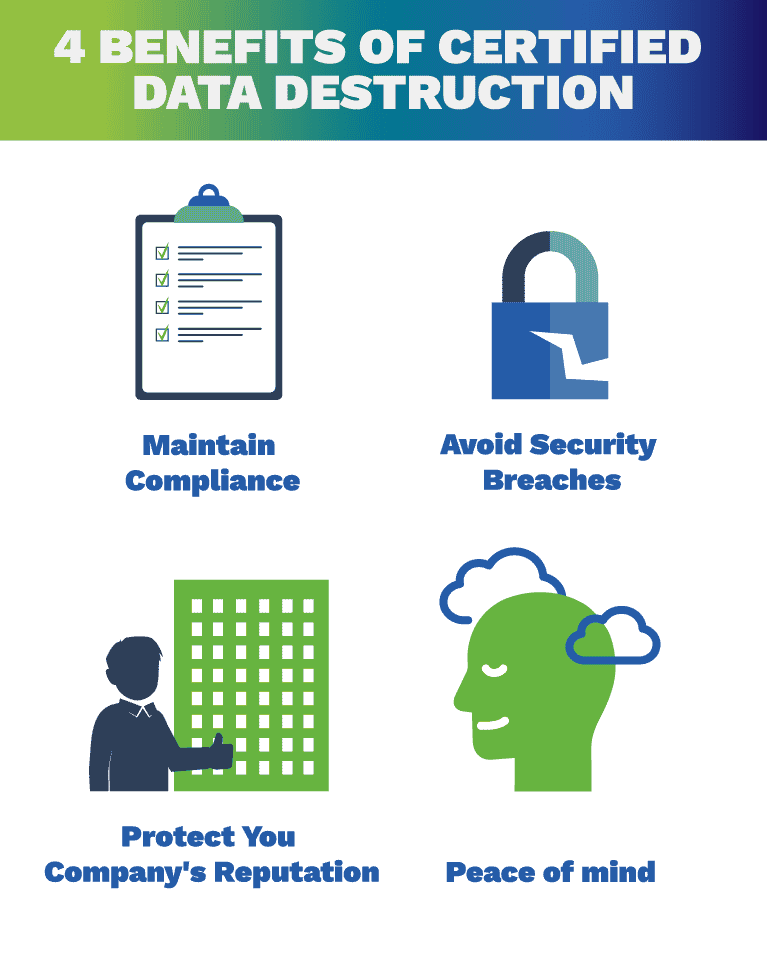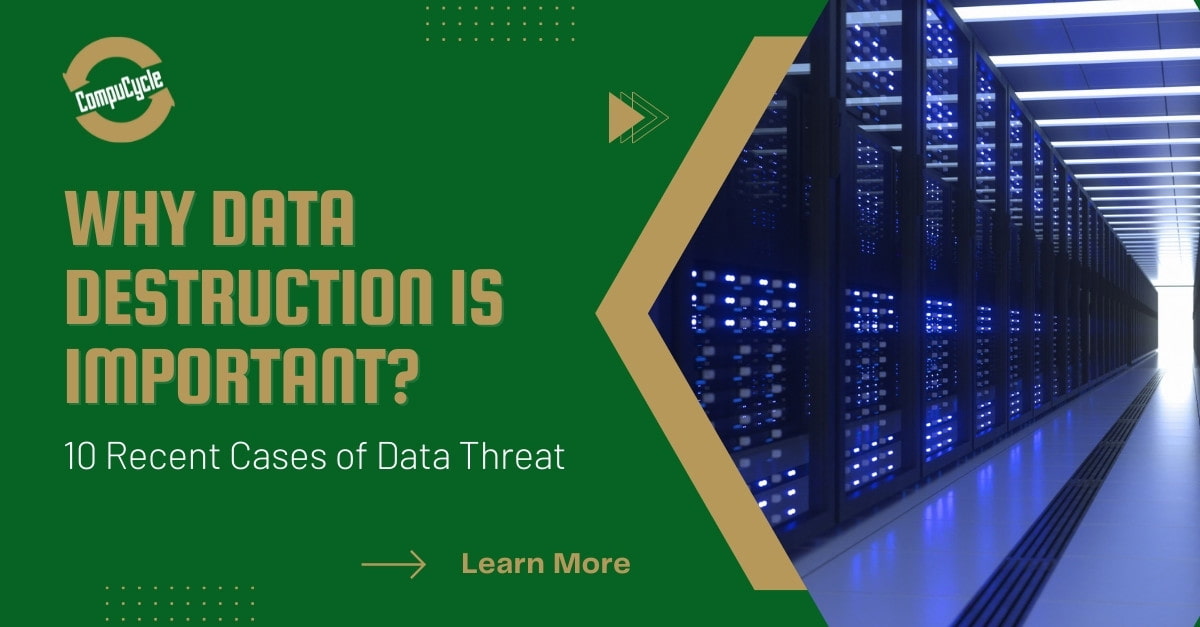Discovering the Value of Data Damage in the Context of Computer Protection Solutions and Protecting Confidential Information
In an age where information breaches are increasingly typical, the significance of effective information damage can not be overemphasized. Organizations must embrace strict procedures to make sure that sensitive details is not just shielded during its lifecycle however likewise decisively eliminated when no much longer essential. The approaches employed for information obliteration, coupled with conformity to lawful standards, play a pivotal duty in maintaining confidentiality and trust. The ramifications of these practices extend past plain conformity, affecting a company's reputation and functional honesty in the digital industry. What methods can organizations apply to enhance their information destruction protocols?
Comprehending Data Destruction
Data devastation is a critical component of computer system security that entails the irreversible removal of data from storage space devices to stop unauthorized access and possible information breaches. In a progressively electronic landscape, companies face enhanced dangers related to delicate information being poorly accessed or manipulated. Reliable information destruction safeguards against these hazards, making certain that confidential dataâEUR" such as customer details, copyright, and financial recordsâEUR" can not be recouped after disposal.
Understanding the relevance of data devastation expands beyond plain compliance with legal and regulative structures; it is important for maintaining organizational stability and trust fund. When information is improperly managed or improperly damaged, the repercussions can be serious, consisting of economic loss, reputational damage, and lawful responsibilities.

Approaches of Data Elimination

One prevalent technique is data wiping, which entails overwriting existing information with random patterns multiple times. This technique provides the initial information irretrievable, making it a popular choice for organizations looking for to protect confidential information.
Another approach is degaussing, which uses an effective electromagnetic field to disrupt the magnetic domain names on storage devices, properly eliminating the information. This approach is especially efficient for magnetic media however is not appropriate to solid-state drives.
Physical destruction is one more durable approach, squashing or entailing the shredding of storage gadgets. This approach assurances that data healing is practically difficult, making it suitable for highly delicate info.
Lastly, encryption can serve as a complementary strategy to information obliteration. By encrypting information before deletion, companies can add an extra layer of security, guaranteeing that also if remnants are recouped, they continue to be unattainable without the decryption trick. Each technique ought to be selected based on the level of data level of sensitivity and the certain safety and security requirements of the organization.
Legal Conformity and Information Security
Organizations need to browse an intricate landscape of legal demands connected to information safety and security, especially after applying techniques of data eradication. Numerous laws, such as the General Information Defense Guideline (GDPR) and the Health Insurance Portability and Accountability Act (HIPAA), enforce strict guidelines on exactly how organizations need to handle and dispose of delicate information. Failure to adhere to these guidelines can result in significant lawful repercussions, consisting of substantial penalties and reputational damage.
Data devastation processes have to be thoroughly recorded to show conformity with relevant regulations and requirements. This documents not only functions as evidence of adherence to lawful responsibilities yet also illustrates a commitment to safeguarding delicate info. Organizations needs to additionally develop clear policies concerning information retention and destruction timelines, making certain that data is not held longer than required.

Furthermore, normal audits and assessments of information devastation methods are important to maintain compliance and adjust to progressing legal frameworks (data destruction). By proactively resolving legal requirements, companies can alleviate dangers associated with data violations and show their commitment to data security. Ultimately, prioritizing lawful conformity in information damage procedures is not just a governing responsibility, yet an essential facet of a robust information protection approach
Impact on Company Credibility
The credibility of an organization can be dramatically influenced by its technique to information devastation and monitoring. In today's electronic landscape, where information violations can occur at any type of minute, the failing to appropriately dispose of delicate info why not try here can result in extreme consequences. Organizations that inadequately handle information destruction threat revealing private consumer info, which not only violates privacy legislations however likewise wears down depend site web on among stakeholders and clients.
A ruined online reputation can lead to lowered consumer loyalty, as customers end up being reluctant to engage with an organization that has actually shown carelessness in shielding their information. Adverse publicity bordering a data breach can have a long lasting effect, as possible consumers could be deterred by the regarded absence of security. This can bring about a straight decline in earnings and market share.
Additionally, companies that focus on data destruction as part of their security strategy can boost their reputation by showcasing their commitment to securing delicate details. By embracing rigid information administration methods, companies can not only minimize dangers but additionally position themselves as trustworthy entities in their respective markets, therefore reinforcing their general brand image.

Best Practices for Secure Disposal
Executing ideal methods for secure disposal of information is vital for alleviating risks linked with data breaches and guaranteeing conformity with privacy policies. Organizations needs to adopt a detailed data disposal policy that lays out treatments for both physical and digital information damage.
For physical information storage tools, such as hard disks, shredding or degaussing is suggested to protect against data recuperation. Additionally, organizations should preserve a chain of wardship paperwork throughout the disposal procedure, ensuring accountability and traceability of disposed products.
For digital data, making use of software application that sticks to industry criteria for data wiping is essential. This software program should overwrite existing data numerous times, making recovery essentially impossible. It is also crucial to confirm the efficiency of the information destruction process with audits or third-party evaluations.
Training staff members on safe disposal techniques adds an additional layer of safety, as human error can commonly lead to data exposure. On a regular basis upgrading and examining disposal plans ensures alignment with developing laws and technological improvements. By carrying out these finest methods, companies can dramatically reduce the risk of unapproved information gain access to and boost their total data security method.
Verdict
To conclude, data damage is a basic element of computer system protection services that ensures the defense of secret information from unauthorized access. Executing reliable methods of information removal, adhering to legal compliance, and acknowledging the influence on company credibility are vital elements of a thorough information security method. By taking on best practices for safe disposal, companies can foster count on with customers and protect delicate information, ultimately adding to a much more protected digital landscape.
In an age where data breaches are increasingly usual, the significance of effective check my blog data devastation can not be overstated.Data damage is an essential component of computer safety that involves the long-term elimination of information from storage tools to stop unapproved gain access to and possible data breaches. Organizations needs to likewise establish clear plans concerning data retention and destruction timelines, making sure that information is not held longer than needed.
By proactively attending to lawful demands, organizations can reduce risks associated with information breaches and demonstrate their dedication to data protection (data destruction). Ultimately, prioritizing lawful compliance in data damage procedures is not simply a regulatory responsibility, but a basic facet of a robust information safety and security approach